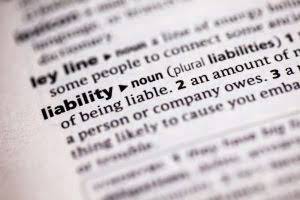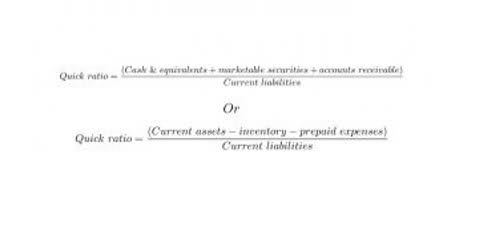
Blue-chip stocks have a strong reputation for performing well and paying dividends. Austin has been working with Ernst & Young for over four years, starting as a senior consultant before being promoted to a manager. At EY, he focuses on strategy, https://www.bookstime.com/articles/what-is-product-cost process and operations improvement, and business transformation consulting services focused on health provider, payer, and public health organizations. Austin specializes in the health industry but supports clients across multiple industries.

What is the difference between authorized shares and outstanding shares?
- The number of shares outstanding can impact how liquid a stock is, which in turn often affects the volatility of its price.
- Evaluating the trend of this number provides useful insights to investors.
- If the beginning or ending share count were used, there would be a mismatch in the timing between the numerator (which typically spans the full fiscal year) and the denominator.
- Stock splits are often initiated to lower the share price, making it more accessible to retail investors and enhancing market liquidity.
- These instruments include stock options, stock warrants, and convertible debt.
- The number of outstanding shares is calculated by subtracting treasury stock from the shares issued.
Options and warrants are one aspect of the difference between basic shares outstanding and diluted shares outstanding. In other words, the treasury stock method accounts for the cash that will come in from option and warrant exercise, and assumes that the cash received will offset a portion of the shares issued. We have been asked to show how the following transactions will impact the company’s balance sheet and calculate the number of shares outstanding.
To Ensure One Vote Per Person, Please Include the Following Info

We Fools may not all hold the same opinions, but we all believe that considering a diverse range of insights makes us better investors. Ask a question about your financial situation providing as much detail as possible. Our writing and editorial staff are a team of experts holding advanced financial designations and have written for most major financial media publications. Our work has been directly cited by organizations including Entrepreneur, Business Insider, Investopedia, Forbes, CNBC, and many others.

Weighted Average Shares Outstanding (WASO)
Total shares outstanding decreased from more than 21 billion in 2016 to less than 17 billion in 2020. The number of shares outstanding can also be found in a company’s balance sheet in the liabilities and shareholder’s equity section. The most up-to-date number of basic shares outstanding can be found in the latest form 10-K or 10-Q of a company. The information is available on the front page of these financial reports. Basic shares outstanding can be sourced from multiple places in a company’s financial statements. Below lists two commons sources starting with the preferred source if available.

A reverse stock split, also known as a share consolidation, is used to make the share price rise into the minimum range necessary to meet an exchange’s listing requirements. As an investor, finding out a company’s number of outstanding how to calculate number of shares outstanding shares could be a key piece of information when considering investing in the company. For this reason, the SEC requires all public companies to report their outstanding shares in their filings to the SEC, which is public information.
They are actively held by stockholders—both outside investors and corporate insiders, such as the company’s management team and other employees. Outstanding shares also include any blocks of stock held by institutional investors, such as mutual or pension fund companies. So far, we’ve focused on shares outstanding, whether basic or diluted, at a fixed point in time. In SEC filings, companies will report the total number of shares outstanding on a given day, but in their quarterly and annual figures they must also offer the weighted average shares outstanding. A company’s number of issued shares includes any shares the company has bought back and now holds in its treasury.
- The information is available on the front page of these financial reports.
- The notes state that the preferred stock dividend is treated as equity, so we have removed this in the adjusted earnings calculation.
- The number of shares outstanding can also be found in a company’s balance sheet in the liabilities and shareholder’s equity section.
- It is a less-commonly used number in the financial reporting of privately-held businesses.
- Besides, it can be helpful to understand where the numbers you’re looking at came from.
- Although the two both relate to the number of shares a public company has issued, they are distinct from one another.
- Consequently, the treatment of stock dividends and splits is different from the treatment used for issuances of shares in exchange for assets or services.
Learn how earnings per share can determine a stock’s value.
By understanding how much money a company makes for each of its common shares, investors can gain a better understanding of the company’s profitability and potential for growth. Explore how corporations authorize and calculate issued shares through market cap and balance sheet methods. So when a company has 1 million shares outstanding, but only 650,000 are available to the public, the float is either 650,000 or 65% of the total shares outstanding. The company does this to reduce the number of outstanding shares, hopefully leading to an increase in the market value of the remaining shares due to the lower supply and larger earnings per share ratio. Using the weighted average method to calculate outstanding shares is consistently accurate, even when the amount of shares changes over time.
Reverse Stock Split
If there is a difference between the number of shares issued and outstanding, the difference is treasury stock. In other words, a company has issued shares and then bought some of the shares back, leaving a reduced number of shares that is currently outstanding. It excludes closely held shares, which are stock shares held by company insiders or controlling investors. These types of investors typically include officers, directors, and company foundations. As an investor, understanding how to calculate stock price per share is crucial in making informed decisions about your investments.